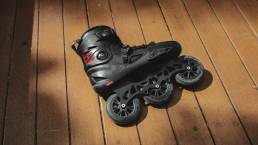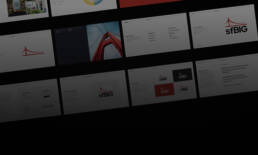Lately, I’ve been thinking about the art of rebranding. We see so many iterations of brands now that it hardly passes our notice unless the redesign is a dramatic fail.
This month I wanted to share a few examples of rebrands gone right and the results it brought. Some of these redesigns saved the company from the brink of failure, others simply helped build connections to new audiences. All have something we could learn from.
What Makes a Successful Rebrand?
Before we review rebrands, let’s define what makes them successful. That can be hard. Companies refresh their branding for many reasons so that success can have different benchmarks each time. To me, a successful rebrand achieves the brand’s goal and drives a positive response from its target audience. I think it’s important to consider both because it’s possible to make the client happy but still miss the mark with their customers. The brands on this list achieved both markers.
01. Burberry Rebrand – From High-End to Luxury
Burberry is known for its rebrands. Their most successful rebrand was in 2009 when they realized their image slipped from high-end to ‘chav’ culture in the UK. The company had to overhaul everything from its signature pattern to its designs, and even the types of models it used in campaigns. The plan worked and the company became a top UK luxury brand.
Flash forward to 2018, and Burberry saw an opportunity to shift again. This time, it aimed to modernize the brand and attract younger consumers while still being true to its brand identity. They wanted to shift the brand’s aesthetic to be more in line with the streetwear-inspired designs that mixed luxury and casual wear. If they were going to do this rebrand right, they knew the monogram and logo that had been in use since 1999 needed a facelift too. With the help of Peter Saville, Burberry launched a new logo and monogram. The brand also launched sustainability initiatives and immersive online shopping experiences that fall in line with what Millenials and Gen Z, their target audience, prefer. Following the rebrand, profits rose and the entire creative team was credited with pulling off yet another successful, drastic rebrand.

02. Dunkin’ Rebrand – Staying Competitive in the Coffee Industry
In 2019, competition in the coffee industry was steaming. Dunkin’ Donuts knew it needed to modernize if it was going to keep up with competitors like Starbucks, who had perfected its appeal to younger audiences. That’s why it announced a major rebrand that included dropping the “donuts” from their name. The idea was to embrace the on-the-go lifestyle of their customers and to be seen are more than just donuts.
Along with the name change, Dunkin’ updated its color palette to orange and pink, revised its store concept to focus on speed and convenience, and updated its menu. The rebrand was introduced with a fun, playful marketing campaign. Ads swept the internet that asked customers to “Just call us Dunkin’”. It was a hit and reignited customers’ passion for their favorite coffee shop.

03. Nike Tagline – From Shoes to the Face of Athleticism
I’ve talked about Nike’s iconic logo on the blog before. However, Nike has a long history of adding iconic branding elements that we can learn from. In the 70s, it was the Swoosh (Nike’s check mark). In the 80s Nike adopted its famous tagline: Just Do It. With that tagline came a strategic shift from being seen as another athletic shoe manufacturer to a movement. Just Do It represented the idea that if you have a body, you’re an athlete. The company pushed this narrative with an aggressive marketing campaign that worked. Today, Nike is still a brand people turn to whether they’re looking for athleisurewear or new running shoes.

04. Abercrombie & Fitch Rebrand – Toxic to Trendy Again
Anyone who ventured into a mall during the 2000s likely shares the sensory memory of the Abercrombie & Fitch store’s distinctive scent. It rose to popularity quickly thanks to strategic branding and the experience you had in store. As time went on, news stories emerged showing the toxic corporate culture and the brand’s disdain for inclusive sizing. This led to a fall from consumer grace as their new target demographic, Gen Z, values these characteristics in brands.
In response to falling profits, Abercrombie listened. They have undergone significant rebranding to become more inclusive and shake off its outdated reputation. It revamped everything from its in-store experience to its values and marketing strategy. Today, stores are lighter, brighter, and less heavy-handed on the perfume. They’ve shifted away from sexualized advertising towards more diverse, body-positive campaigns. Their profits in recent years, as well as the nostalgia for higher-end 90s fashion, have allowed Abercrombie to rise in popularity again.
05. Apple’s 1997 Rebrand – Leveraging Electronics as a Lifestyle
You can’t talk about great rebrands without mentioning Apple. Today you can hardly go 10 feet without seeing an Apple product. They’re on our desks, on our wrists, it is our television connection. Apple is everywhere. This is thanks to an iconic rebranding campaign called “Think Different” which ran in the late 1990s. The campaign challenged people to shift the brand’s image from a computer company to a lifestyle brand. Overnight Apple became our tech thought leader and innovator.
To pull off the rebrand, Apple ditched its rainbow apple icon for a sleek, minimalistic design. Their marketing team spun the narrative that aligned Apple with being the poster child of a tech-savvy, successful person. In 2006, Apple took the idea further with its iconic Mac vs PC campaigns to separate themselves from competitors. Today, the brand is still seen as one of the most iconic rebrands in history.

What do all the best brand redesigns have in common?
The most important lesson from all of these examples is that it is ok to change. You can outgrow your brand, your audience, and your values. When that happens you must be willing to make the hard call to grow. The longest living companies have earned their candles because they weren’t afraid to take chances and evolve their brand identities.
If you’re considering a rebrand then let’s sit down and define what your goals are and how to meet them.
Borja Zamora
A Barcelona native but San Francisco based, Borja explores digital marketing and design through articles, images, and quotes.
Related Posts
September 15, 2024
From Band-Aid to Popsicle: 12 Brands That Became Household Names
Great design is all around you. In our daily lives, we interact with objects…
August 27, 2024
The Secret Lives of Objects: Hidden Design Stories in Everyday Product Designs
Great design is all around you. In our daily lives, we interact with objects…
April 30, 2024
sfBIG: A Non-Profit Website Re-Design & Branding Case Study
After successfully rebranding several non-profits, I was honored to be asked to…
March 22, 2024
Lessons From The Worst Rebrands in History
What were the worst rebrands in history? Let’s look at 7 lessons in bad…
Related Posts
September 15, 2024
From Band-Aid to Popsicle: 12 Brands That Became Household Names
Great design is all around you. In our daily lives, we interact with objects…
August 27, 2024
The Secret Lives of Objects: Hidden Design Stories in Everyday Product Designs
Great design is all around you. In our daily lives, we interact with objects…
April 30, 2024
sfBIG: A Non-Profit Website Re-Design & Branding Case Study
After successfully rebranding several non-profits, I was honored to be asked to…
March 22, 2024
Lessons From The Worst Rebrands in History
What were the worst rebrands in history? Let’s look at 7 lessons in bad…






